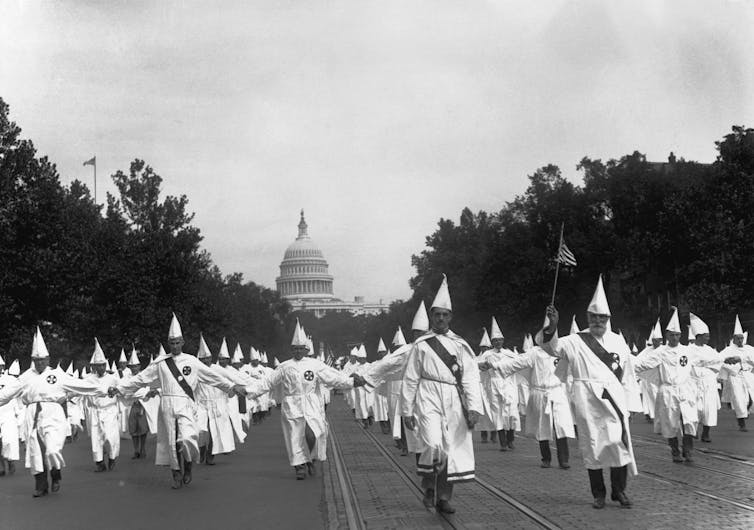Money floods Wisconsin’s Supreme Court race as voters weigh in on the destruction of everything

'Which shall rule — wealth or man; which shall lead — money or intellect?' asked a former Wisconsin Supreme Court chief justice | Getty Images Creative
Does it matter to Wisconsin voters that Elon Musk is trying to buy a seat on the Wisconsin Supreme Court? Maybe not to “Scott A.” as Musk called him, the Green Bay voter to whom Musk gave $1 million as part of his campaign to reward Wisconsinites who sign a petition against “activist judges,” while at the same time handing over their personal data to Musk. Scott A.’s haul is one-fifth the size of Musk’s $20 million investment in campaign ads and door-knocking to support his preferred candidate, Brad Schimel.
And Musk’s $20 million spending spree accounts for about one-fifth of the total, record-breaking $100 million that makes the April 1 contest the most expensive judicial race in U.S. history.
The race is a test of many things: Whether Musk, serving as unelected and unpopular co-president to Donald Trump, is a political asset or a liability; whether the new liberal majority on the Wisconsin Supreme Court will endure; whether the highest bidder is destined to win state court races even as the ad war becomes a blitzkrieg; whether three months into the Trump administration, amid mass firings, the dismantling of federal agencies and voter unease about the destruction of their health care and retirement security, Wisconsin might be the place where things begin to turn around.
The money pouring into the Supreme Court race is obscene and a bad sign for the health of democracy regardless of next week’s outcome. But the sickness didn’t flare up overnight. It has been getting steadily worse for almost two decades.
Schimel makes the claim that he is running to restore the Court’s “impartiality,” motivated by his disgust at how “political” the Court’s new liberal majority has become. In truth, the politicization of the Court goes back almost two decades and Schimel, a highly partisan Republican, is an unlikely candidate to take us back to pre-partisan times. On the other side, Susan Crawford is backed by the Democrats and big out of state donors including George Soros. In a recent debate she conceded that the public has an interest in ethics rules that would require judges to recuse themselves from cases involving their donors, but the current rules don’t require that. Neither candidate has promised to recuse from such cases.
The turning point that led us to the current moment came in 2008. That was the year disgraced former Supreme Court Justice Michael Gableman defeated incumbent Justice Louis Butler in a dirty campaign that broke all previous spending records. The race cost $6 million — at the time, an astounding sum.
Wisconsin Manufacturers and Commerce, Gableman’s biggest-spending supporter, paid for ads calling Butler “Loophole Louie” and accusing him of being soft on crime. Gableman himself ran a disgusting ad that placed Butler’s face next to the mugshot of a convicted rapist. Both men were Black. The ad misleadingly claimed that Butler “found a loophole” and let the man out of prison “to molest another child.” In fact, Butler was not the judge in the case. As a public defender assigned to defend his client, he lost in court and his client was imprisoned, then later reoffended after he was released, having served his full sentence.
Gableman went on to help destroy ethics rules on the Court, refusing to recuse himself from cases involving WMC, which had spent more than $2 million to help elect him. He played a key role in passing the current ethics rule allowing justices to decide for themselves whether to recuse in cases involving their big-money campaign contributors.
Gableman embarrassed supporters, including Dodge County District Attorney Steven Bauer, who publicly withdrew his support during the campaign because of the attack ad. Tellingly, after he left the Court, Gableman disappeared, never landing a job at a law firm or in public service. His brief return to the limelight, as Assembly Speaker Robin Vos’s chief investigator of nonexistent voter fraud, featured Gableman threatening to jail the mayors of Democratic cities and wasting more than a million taxpayer dollars on a farcical investigation that ended when Vos fired him.
But the damage done by Gableman and the people who poured money into electing him endures.
The 2025 Supreme Court race, which is on track to double the cost of the last record-breaking election in 2023, is 15 times as costly as Gableman’s expensive and shamefully politicized campaign.
Ads featuring scary crime stories are still a major feature of Supreme Court races, sponsored by people who know and don’t care that tough-on-crime issues aren’t coming before the Court. Instead, the ads are paid for by ideological groups, political parties and corporations interested in favorable treatment — like Musk, who has a current lawsuit in Wisconsin seeking to overturn a state law blocking him from opening Tesla dealerships here.
Back in 1873, Wisconsin Supreme Court Chief Justice Edward Ryan worried about the rise of the robber barons, their accumulation of vast personal wealth and with it political power. Speaking at the University of Wisconsin Law School, he posed the question: “Which shall rule — wealth or man; which shall lead — money or intellect; who shall fill public stations — educated and patriotic free men, or the feudal serfs of corporate capital?”
We are well on our way to becoming a nation of feudal serfs to Elon Musk. The liquidation of government agencies and institutions that serve the public interest are a giant step in that direction. The Wisconsin Supreme Court election will take us further down that road, or move us in the opposite direction. But until we do something about the arms race in campaign spending, Ryan’s vision of government by “educated and patriotic free men (and women)” will be increasingly out of reach.
GET THE MORNING HEADLINES.



















